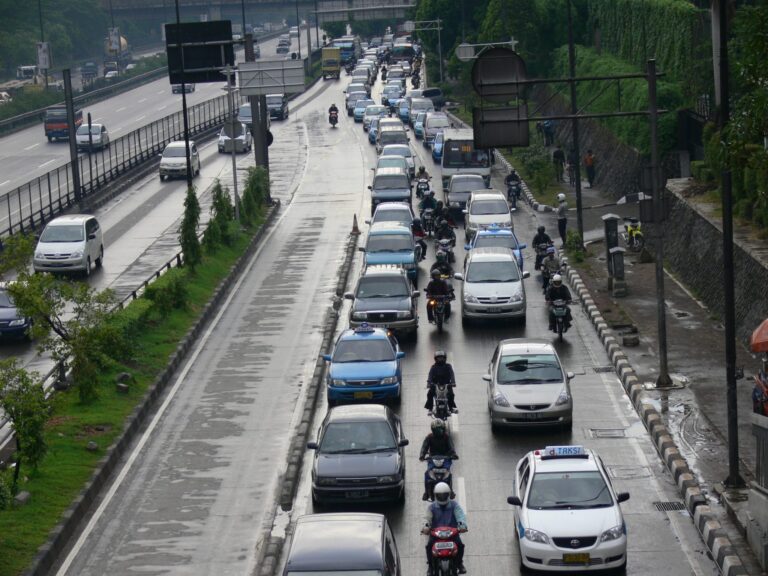Justin Hamilton takes a look at the growth of electronic toll charging and payment technology across India and South-East Asia
Over the past month, a series of banks across Asia have announced their participation in a range of new and existing road charging schemes. Very soon, drivers in India, Indonesia and Singapore will benefit from easier payment options and more streamlined tolling transactions.
Entering into a partnership with existing payment provider EZ-Link, Citibank Singapore has presented a scheme targeted at fleet operators. The EZ-Reload Corporate Service will link up to 1,000 EZ-Link cards to a single commercial account, topping up each card automatically whenever necessary. The service will also provide fleet managers with usage and tracking data for each registered EZ-Link card. With a well-established programme, Singapore has long been at the forefront of road pricing innovation. With the introduction of GNSS based charging due soon, it is unsurprising that we are seeing developments in other areas of tolling.
Across the Java Sea, Indonesia’s electronic tolling scheme, Etoll Pass, has not been quite as successful. Following a two year implementation period, it was announced in 2014 that the two-piece infrared based on board unit (OBU) would be replaced with a single unit. Among the chief concerns was the requirement for users to insert their bank cards into the OBU. For many drivers, this card was also used for other payments, resulting in a large number of failed transactions. More recently, three new state-owned banks – Bank Negara Indonesia, Bank Rakyat Indonesia and Bank Tabungan Negara – will join existing provider, Bank Mandiri, in enabling Indonesian drivers to pay for toll roads via electronic means. The move is designed to reduce the reliance on cash and will serve as an “embryo” for the future expansion of non-cash transactions. The agreement opens up a market hitherto dominated by Bank Mandiri’s e-money card. The four state-owned institutions are also working on a system known as “Himbara Link”, which would allow other private banks to join in the future.
Coming back to the continent, the Indian Government has announced plans to enrol additional, yet unnamed, banks in the existing electronic scheme, FASTag. The move is designed to encourage drivers to abandon cash and sign up to the flagship RFID based system. First launched in September 2014, FASTag enables cashless payment over the NH-8 expressway between Delhi and Mumbai; the longest stretch of electronic toll charging in India. While FASTag is only accepted at 35 plazas, the move is part of a much broader plan to roll out electronic charging across the entire network. The Government has also committed to introducing a single clearing house in an effort to simplify the existing patchwork of separate banks each clearing their own payments. It is hoped that the introduction of new players will bring welcome competition to the electronic payment market and reduce transaction fees for the user.
These schemes reflect the significant growth in electronic toll collection seen across Asia. The trend is particularly pronounced in India and China, which are both rapidly replacing manual toll lanes with free-flow schemes. Fewer than 5 million today, the number of electronic tolling subscribers in China will exceed 75 million by 2025.
Integration with existing payment methods is an important step towards positioning tolling as an accepted mobility service. While the Indian and Indonesian updates are extensions to current services, all achieve the aim of simplify tolling payments and broadening choice for the individual user. Each programme also follows a growing trend of positioning road charging as a connected and integrated transportation method for both fleet and individual customers.
Making it easier to pay the toll is one of many measures which can contribute to a more satisfied user base, and therefore a greater acceptance of the charge. Eliminating the need for cash or correct change can also help to dampen any public resistance to tolls, which has been seen very recently in India. Linking payments to an individual’s own financial provider may help to build trust and recognition among the user base.
Automating the top-up function for commercial users will help to eliminate large numbers of non-payments seen on a daily basis. As outlined in our global study, Singapore’s ERP scheme alone has seen up to 800 violations per day, around 90 per cent of which were due to insufficient funds on the payment card.
By ensuring tolls become nothing more than another transaction, banks can help to normalise tolling for the frequent and occasional user alike. Removing differences in payment methods can ensure that tolling becomes just another mobility transaction, rather than an outlier requiring its own technology, systems and interface. The fewer stones that can be thrown the less damage there will be.
This article was published in the November 2015 issue of Road User Charging
Image courtesy of freeimages.com





